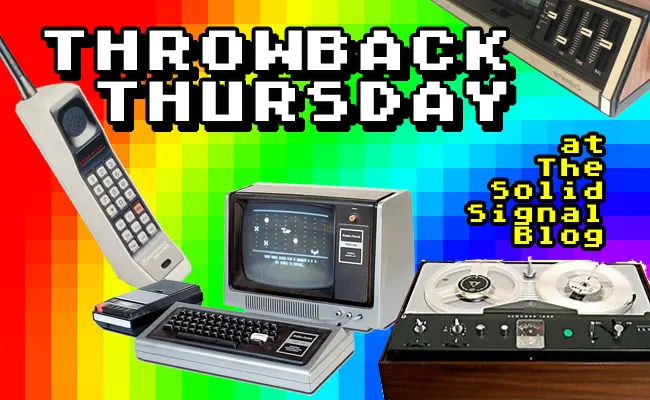I have honestly lost track of the number of times I’ve railed on 4K since I started working at this blog. It’s probably close to 100 by now. I know that I saw my first 4K TV in 2012, and since then I’ve been pretty consistent about two things. One, that you need a pretty big screen to notice the difference. (It’s 2022 now, so “check.”) Two, that there isn’t that much 4K content out there no matter where you look.
Oh yes, there’s 4K streaming and DIRECTV now has four dedicated 4K channels plus 4K pay per view. It’s out there. For sure. You can even get a 4K Blu-ray disc player in case you’re incredibly invested in physical media. But is 4K “everywhere?” Far from it. Despite a lot of people saying they were going to move to 4K, it’s really just a niche at this point.
And that means I was wrong.
Way back in 2017…
…I wrote a Throwback Thursday article looking back to 2013. Believe it or not in 2013 there were still a lot of programs being produced in standard definition. Pretty much every national TV provider had some sort of high-definition presence. Most local channels did too. But, there were some surprisingly high-profile holdouts and I named a few of them.
Looking at that 2017 article, I guess I have to say it must have been a busy day. The article isn’t terribly long or terribly deep. But hey, it’s five years later and I keep improving. That article ended with a sort of prediction:
Well, I guess I’ll just wait until 2021, and run a “Throwback Thursday” to when HD was still a thing. See you then!
The implication was that by 2021 we’d be mostly 4K and that HD would be on its way out. Obviously, that didn’t so much happen, did it.
What’s holding up 4K TV?
Well let’s start by saying, as I have before, that there is 4K content out there. And, it’s getting better. More bandwidth and faster internet speeds mean that the 4K HDR and Dolby Vision content out there isn’t that bad. DIRECTV continues to improve its encoders so that they can offer ever-better 4K content. It’s there. It’s just not everywhere.
Of course the biggest thing holding back 4K is, well, 4K itself. After all these years, there just isn’t that much content. And this surprises me, because at this point it couldn’t be much more expensive to master stuff in 4K. It’s just a matter of faster computers and bigger hard drives. Is that so hard? I do suspect that a lot of network programs are shot in 4K and mastered down to HD in the final step. This would make sense for shows that expect to be on the air for a long time.
In order for us to see the fruits of this, you would need one of two things. Either those 4K masters would need to be available over streaming or satellite, or we would need a way to broadcast it over the air.
I know you’re tired of hearing me say that over-the-air 4K is tied to the ATSC 3.0 standard. That standard is sort of stalled. Yes, the pandemic was a gut punch to broadcasters as much as it was to any other industry. But let’s be honest. We were not on track to transition to ATSC 3.0 before the pandemic. At this point you have to believe we couldn’t get a full transition done much before 2030.
I guess that’s my next target for another Throwback Thursday article. See you then.





